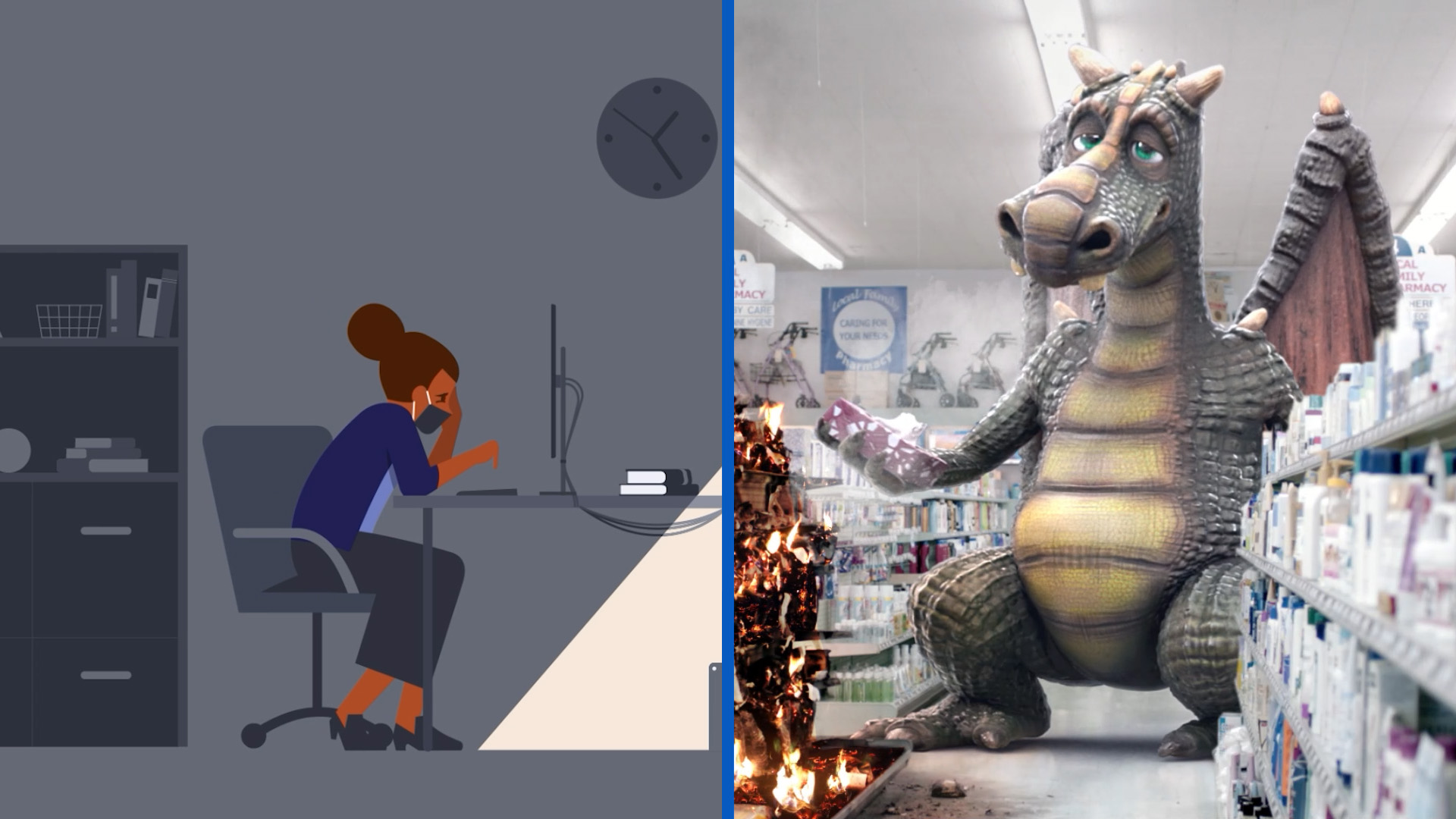Choosing between 2D and 3D animation isn’t about which looks cooler, but about which better serves your message, audience, and channels. 2D excels at turning complex or abstract ideas into clear, engaging stories (like explainers, motion graphics, and social content). 3D shines when you need depth, realism, or product/space visualization that viewers can “feel.”
In this guide, we’ll compare both styles, highlighting their strengths, limitations, timelines, and budget drivers. Continue reading to explore scenario-based recommendations.
|
2D Animation |
3D Animation |
Best If... |
| Core Strength |
Simplifies abstract ideas, provides graphic/illustrative clarity, and uses highly brandable motion systems. |
Provides realism, dimensionality, and physicality through dynamic cameras and lighting, achieving product/space accuracy. |
You need clarity and speed (explainer, social, motion design) vs. you need realism and immersion (product demos, architectural/medical). |
| Typical Use Cases |
Explainers, motion graphics packages, logo/brand animations, social cutdowns. |
Photoreal product demos, virtual tours, technical/industrial stories, hero visuals. |
Your message is conceptual (2D) or tactile/feature-driven (3D). |
| Limitations |
Limited depth/realism. Complex hand-drawn scenes can add time/cost. |
Higher cost/time from modeling, texturing, lighting, sims, and rendering. |
You have tight timelines/budgets (2D) or you can invest for premium realism (3D). |
| Asset Reuse |
Great for reusable icon/illustration systems and is easy to localize and version. |
3D models can generate both video and high-quality stills from any angle for web/print. |
You need lots of motion variants (2D) or cross-channel stills and video from one source (3D). |
| Tooling |
Adobe Illustrator, Photoshop, After Effects, Premiere; accelerated workstations/network. |
Unreal Engine, Cinema 4D with Octane/Redshift; accelerated workstations/network. |
You prefer vector-based workflows (2D) or real-time/renderer-driven pipelines (3D). |
| Distribution and Versions |
Fast to produce cutdowns, captions, and social ratios (16:9, 1:1, 9:16). |
Easy to output multiple angles/renders and strong for hero edits/product stills. |
You prioritize rapid social iteration (2D) or hero assets and product realism (3D). |
What is 2D Animation?
2D uses flat, illustrated or typographic elements to convey ideas with clarity and pace. Think motion graphics, character/mascot spots, UI explainers, and social cutdowns. 2D animation is ideal when your message is conceptual (processes, benefits, stories) and you need fast iteration across channels. It’s also highly brandable, allowing you to use your own illustration style, typography, and color palette with ease.
The only drawbacks of 2D animation? There are limited capabilities in terms of realism and depth, with complex frame-by-frame scenes adding time and cost. Camera movement and lighting are also stylized instead of a physical act, making it challenging to use in product demos, facility tours, and scenes with ample movement.
What is 3D Animation?
3D builds volumetric models in a virtual space, allowing true-to-life lighting, materials, and camera movements. It’s the right fit for product realism, exploded views, interiors/architecture, medical or technical storytelling, and “impossible” shots that live action can’t capture cost-effectively. Plus, 3D animation can render in both video formats and high-quality stills for print or web, allowing you to capture your products and spaces from any angle.
However, 3D animation can be daunting due to the longer timelines and higher cost drivers like modeling, texturing, simulations, and rendering. Because it’s highly technical, 3D animation also makes it difficult to make late-stage changes without incurring significant setbacks and price increases.
How to Pick Between 2D and 3D Animation
When trying to determine which animation style is best for your project, start with the business problem, not the technique. Clarify whether the piece must drive awareness, educate, support product evaluation, or convert, then tie the creative choice to the KPI you’ll actually track. For audiences and messages, think about abstraction versus tangibility: 2D tends to explain concepts, processes, and frameworks with speed and clarity, while 3D communicates physical truth like materials, mechanisms, and spaces.
Brand Voice and Art Direction
Your brand voice and art direction also matter. If your identity is more illustrative, iconic, playful, or editorial, 2D often delivers a more ownable look. If you need premium, engineered, or photoreal storytelling, 3D typically reads as cinematic. Consider your channel mix and deliverables, too, as 2D can scale quickly for motion graphics packages and social media while 3D assets play dividends when you need hero edits for web and reusable product stills.
Timeline, Budget, and Revision Risk
Timeline, budget, and revision risk should shape the decision. When speed, frequent variants, or localization are likely, 2D usually offers faster iteration. When you can invest up front in modeling and look development to achieve higher production value, 3D is the better fit. However, it’s essential to manage feedback early through storyboards and style guides to avoid costly late changes.
Stakeholders and Compliance Requirements
Finally, factor in your stakeholders and compliance requirements. Large approval groups focused on product accuracy often move faster with 3D, while teams rallying behind an idea or narrative typically reach an agreement sooner with 2D. As a general rule of thumb, choose 2D when the message is conceptual and you need fast, branded iteration across social, and 3D when you need realism, accurate visualization, and campaign-ready stills.
Scenario-Based Recommendations: When to Choose 2D or 3D
While both animation styles have unique benefits, there are specific scenarios that would most benefit from one or the other. For 2D, these include:
- Abstract education or process explainers.
- UI/UX, data, or SaaS feature demos.
- Brand storytelling for social media.
- Projects with tight timelines or lighter budgets.
Scenarios that work best with 3D animation include:
- Physical product demos, mechanisms, or engineering stories.
- Medical, industrial, or regulated industry accuracy.
- Hero visuals for launches (website headers, ads, trade shows).
- Architecture/interiors, spatial wayfinding, or virtual tours.
Aligned Media’s Animation Capabilities
Aligned Media offers both 2D and 3D animation fully in-house, using an end-to-end process to protect quality while keeping turnarounds predictable across styles. Our 11,000 square foot studio in the St. Louis Arts District is our hub of collaboration, stacked with custom workstations that run on a high-speed internal network capable of smooth 8k raw playback.
We partner with clients across the United States, offering video and high-resolution stills for web, print, and events in the same asset library. Whether you’re looking to launch an awareness campaign on social media or want to enhance your website with realistic product demos, Aligned Media is here to help.
Learn more about our 2D animation and 3D animation capabilities or contact our experts today to start planning your next project.


